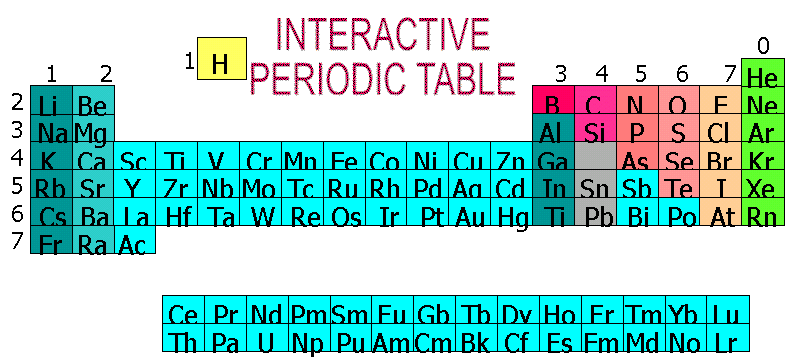

The Halogens are the elements (fluorine, chlorine, bromine iodine and astatine), which make up Group VII in the p-block of the periodic table.
| Element | Atomic number, Z |
Electro-negativity |
Atomic radius/pm | Ionic radius/pm | Melting temperature/°C | Boiling temperature/°C | Electronic configuration |
| Fluorine | 9 | 4.0 | 72 | 136 | -220 | -188 | |
| Chlorine | 17 | 3.0 | 99 | 181 | -101 | -34.7 | |
| Bromine | 35 | 2.8 | 114 | 195 | -7.2 | 58.8 | |
| Iodine | 53 | 2.5 | 133 | 216 | 114 | 184 | |
| Astatine | 85 | - | - | - | 302 | 337 |
The similarities between the elements are greater in this group than in any other p-block group. The halogens are non.metals and exist as diatomic covakent molecules. Their melting, boiling points and enthalpies of melting and boiling points increase with atomic number down the group as the intermolecular van der Waals forces increase with the number of electrons in the atoms. Despite this increase, the intermolecular forces still remain rather weak, thus giving the halogens the characterisctiv of being very volatile. Halogens are not very soluble in water: Chlorine, Bromine and Iodine are just slightly soluble. However, they are very soluble in other solvents such as cyclohexane.
The outer p-subshell of the halogen atoms is just one electron short of the stable configuration of Argon. As a result, by gaining electrons from metals or by sharing electrons with less electrongegative non-metals, halogens act as oxidising agents and complete their outer shell. The electronegativity and the reactivity of the halogens decrease with atomic number down the group from Fluorine to Astatine. Fluorine is the most electronegative of all the elements, so its oxidation number is -1 in all its compounds. Chlorine, Bromine and Iodine all form halides with Ox = -1 but also form compounds with positive oxidation states up to +7.
All the halogens form metal halides. The increasing size of the halide ions from F- to Cl- to Br- to I- means that the ions become more easily polarised and the properties are less typically ionic. The aluminium halides are a good example: AlF3 is purely ionic, AlCl3 has some ionic and covalent characteristics, while AlBr3 and AlI3 exist exclusively as covalent compounds.
Halogens form covalent compounds with non-metals including hydrogen, oxygen and even themselves. The hydrogen halides are covalently bonded diatomic molecules with the general formula HX. They can be prepared in the laboratory by warming anhydrous phosphoric acid with potassium halide.All hydrogen halides are gasses at room temperature apart from hydrogen fluoride which is a liquid owing to its strong hydrogen bonds. Hydrogen chloride, hydrogen bromide and hydrogen iodide are very soluble in water, forming strong acids called hydrochloric, hydrobromic and hydroiodic acid respectively. By contrast, hydrogen fluoride forms weak hydrofluoric acid because the strong H-F bond must be broken to release H+ ions.
The hydrogen halides show a trend in thermal stability. Hydrogen iodide is easily decomposed into its elements by plunging a red hot wire into a test of the gas. Hydrogen bromide may or may not decompose, depending on the exact temperature of the wire. Hydrogen chloride is not decomposed.
The insolubility of silver halides is the characteristic of this test. The test solution is made acidic with the addition of dilute nitric acid to ensure the removal of carbonate or sluphite ions which would interfere by giving a precipitate. Then aqueous silver nitrate is added to the solution. Since silver halides are insoluble a precipitate will form whose colour depends upond the halide. If in doubt of the colour, the precipitates can be better distinguished by their reaction with ammonia solution.
| Chloride | Bromide | Iodide | |
| Addition of silver nitrate | white precipitate | pale yellow precipitate | yellow precipitate |
| Addition of dilute ammonia | precipitate dissolves | no change | no change |
| Addition of conc ammonia | precipitate dissolves | precipitate dissolves | no change |
This test cannot, however, be used for fluorides since silver fluoride is soluble in water.